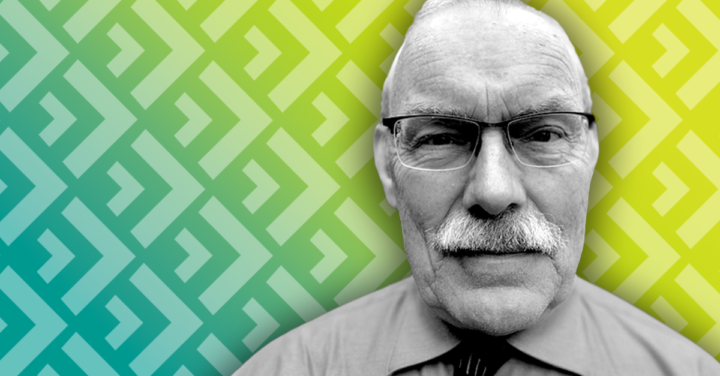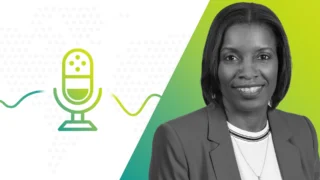
By Jing Lang, FCIA
On a scorching day in August 2012, Donald Blue, FCIA received a phone call that altered the rest of his professional life. Having just turned 61, Don didn’t think he had another drastic career change in him. But when the recruiter painted a picture of his client in hot water, Don was intrigued. Would Don be interested in the opportunity?, the recruiter wanted to know. And Don decided yes as soon as he heard who the client was. After all, he still wanted a challenge.
What Don faced
Six weeks after that phone call, Don reported to 200 Front Street West as Vice-President and Chief Actuary of the Workplace Safety and Insurance Board (WSIB), an agency of the Ontario government that provides loss-of-earning benefits, medical coverage, and related benefits to workers with work-related injury or illness. Like workplace compensation boards in other Canadian jurisdictions, the WSIB receives no government funding and is instead solely funded by employer premiums and investment income; unlike boards in other jurisdictions, it has never been fully funded or come close to it.
The WSIB has had an unfunded liability (UFL)1The unfunded liability (UFL) is the amount by which liabilities exceed assets; when assets exceed liabilities, the difference is called a funding surplus. since its inception in 1914. This figure steadily ticked up over the century due in no small part to a combination of full funding never being mandated in the Workmen’s Compensation Act (1914) or Workplace Safety and Insurance Act (WSIA, 1997), government’s legislating new benefits over the years without allowing the WSIB to charge adequate premium rates to fund for those benefits, and the WSIB’s ongoing inability to properly price its risks. In 2011, the year before Don took office, the WSIB’s UFL had ballooned to a whopping C$14.2 billion22015 Economic Statement. or a funding ratio just over 50% (compared to $2 billion in 19833Funding Fairness Report.), a figure that inspired little confidence in policy-makers, employers, and workers alike.
Thankfully, policy changes were coming. In his 2009 annual report, the Auditor General of Ontario expressed his concern for the perceived imminent inability of the WSIB to meet its commitments and mandated a new approach to deal with its UFL. Subsequently, in 2012, Ontario passed legislation enforcing 100% funding by the end of 2027, with interim milestones of 60% and 80% by the end of 2017 and 2022, respectively. A new CEO, David Marshall, came on board in January 2010, who made reducing the UFL a priority. So when the previous chief actuary retired, David knew what qualities he needed in this key role. Against this backdrop, Don started his tenure at the WSIB.
Transparent rate setting
As the chief actuary, Don’s primary responsibilities were threefold: valuation of claims liability, pricing for the new premium year, and costing of benefit changes. The most contentious aspect resided in pricing or rate setting, which needed to be set both on the system level, which covers the entire Schedule 1 employee population,4Schedule 1 employers are insured under a “collective liability” system and are required to contribute to the WSIB Insurance Fund. Schedule 2 employers are “self-insured” and do not pay … Continue reading and the employer level, which reflects the employer’s individual experience.
When Don started in October 2012, the 2013 premium rates had already been approved. The first year Don had input into new rate setting was for the 2014 premium year.
“Premium rates were very high at that time, and although conceptually you’d think that there would be a healthy margin for recovery of the unfunded liability, it wasn’t necessarily identified as such,” Don noted. “At the time, recent experience had been bad though it was showing signs of turning around. The employers, I think, were willing to support us by paying a higher rate than they believed they should pay as long as they had confidence that we were moving in the right direction.”
To bolster that confidence, Don wanted to be more transparent about what the new premium rate included. In each year’s premium manual, the premium rate is expressed as the sum of three components: new claims cost (NCC, expected future lifetime benefit cost for all new claims for that premium year), past claims cost (an explicit charge to retire the UFL), and overhead expense. Now Don wanted to include a margin within the NCC, to account for trend and/or random fluctuations. This was no small feat for the WSIB’s 40-person Actuarial Service Department to determine for Ontario’s 300,000 workplaces, but again, Don felt that to secure continued support from the employer groups, the rates needed to be as transparent as possible.
Indeed, since employer premiums were the sole revenue source for the WSIB aside from return on invested assets, support from employers was crucial in getting the WSIB on the much-needed trajectory to becoming fully funded. The agency’s inaugural Economic Statement, released in 2015, stated that its UFL had nearly halved since its $14.2-billion high in 2011. The agency credited four factors for this achievement: investment in workplace safety, increased focus on recovery and active management of return-to-work activities, prudent and diversified investment management, and, finally, employer premiums.
Turning around
By 2016, when Don and his team were laying the groundwork for setting 2017 premium rates, Don noted that experience continued to improve (likely due to the snowball impact from safer workplaces and positive return-to-work results). “I began to think we didn’t need as much margin as we had incorporated in the NCC component,” he said.
So for the next few years, the WSIB started successive reduction of its rates. “We first reduced the new claims cost because experience was improving, then we reduced the margins. We had started off at something like 20% margins, I think, and then we realized we didn’t need as much as that unless there were deteriorating trends.”
By the second quarter of 2018, the 2019 average new premium rate looked to be landing on $1.65 (per $100 of insurable earnings), a 30% reduction from $2.35 the year before, and 33% from the $2.46 average new premium rate when Don took office. During the same quarter, the WSIB announced the agency had reached full funding, nearly 10 years ahead of its legislated deadline.
Years later, Don described his thought process about joining the WSIB at such a pivotal time.
“First, out of professional interest, I thought it would be really interesting to know how an organization as big as this got so underfunded. I also thought, even more importantly, it would be really cool to have an opportunity to contribute in ways that we as actuaries don’t always get—if I could do something to assist in reducing the UFL at that time.”
He continued, “I didn’t envision being able to eliminate it in my time. When you’re looking at a $14-billion shortfall, none of us at WSIB thought, we’ll take that out in six years or so. We thought, it’ll take much longer than that. But as it turned out, it didn’t take much longer, which surprised us.”
After reflection, Don added, “One thing that taught me is the power of corporate commitment to delivering. Because from the president on down, everybody in the organization was committed to eliminating the unfunded liability. There was uniform support from every area of the company. We had addressed what we felt to be deficient claims adjudication standards, we improved our return-to-work activities, injury rate improved, the board accepted my rate proposals, the employers supported us, we had consistently strong investment returns. It was very gratifying that I was able to contribute to that [retiring of the UFL] process.”
Weathering through
If taking on the challenge at the WSIB was self-imposed, Don has also weathered considerable unplanned career upheaval as well. In September 1993, Don joined Ontario Blue Cross when it was going through significant restructuring. About a year after Don joined, a large international US-headquartered P&C company acquired it.
“Although they didn’t know our business, they felt they knew insurance and they had good managers, so they didn’t need to understand our business to manage us,” Don recounted. “Then they realized how wrong they were and brought in people who did have background in the business, but in my view those people may not have been well suited for the specific position they were brought into, so that didn’t work either.” A great deal of stress and chaos ensued for several years, during which many people departed voluntarily and involuntarily, and it was by no means certain whether the organization would continue to exist.
Finally, the parent company hired someone well suited with the appropriate background to be the CEO. After some housecleaning and strategizing, it was decided the organization, now renamed Liberty Health, was going to rebuild itself around group long-term disability and group life. Group insurance happened to be Don’s forte, as he had spent nearly 25 years in the space by then.
“I knew a lot about group long-term disability,” Don recalled. “It turned out that my background and knowledge were things the organization could use, and I was able to demonstrate that and learn something from the process, too.”
Reflecting on those turbulent years, Don said he learned that trust is probably the most important factor in longevity at a workplace. “You need to like and trust the people you work with, and the organization needs to make you feel they are doing whatever they can to live up to the ideals they profess. If you don’t like the people you work with and you don’t like or trust your boss, if you see the organization collectively doing things that appear to conflict directly with what it says it is going to do, those would all be red flags, I think. The people who I worked with then, who stayed on as I did, were the people who became rocks for me at that place.”
Know thyself
From stepping into his first actuarial job in 1974 at Quebec Blue Cross, to stepping down in 2021 as chief actuary of the WSIB (after one year of parallel transition with his successor, Yun Kang), Don has a lot to say about what he learned during his near half-century career.
One, he learned to accept that he is not a relaxed guy. He chuckled as he explained.
“First, no one who is relaxed stutters, and I stutter. Second, my normal pace of speech is pretty rapid. I try to slow down when I think of it because it communicates more clearly, but left to my own devices, I speak rapidly, which leads to more stutter. It’s like there is a perpetual gap between one’s mind and one’s ability to verbalize it in real time. The more intense the desire to verbalize, the more that gap lengthens.”
The non-relaxed part also applies to working with his team. If Don has questions while reviewing materials with his team, he jumps into them immediately. He chalks that up to his innate amount of energy and focus when it comes to work. His team would agree. Don recounted how one time, in his late 30s, when he told his team that he thought of his management style as fairly laid back. “I saw them all start to grin and look at each other and shake their heads and say ‘No, uh-uh.’ And they weren’t being mean, they liked me and I liked them. They were a great team and I liked working together. But they meant, ‘You are not laid back.’”
Two, Don places a tremendous amount of responsibility on managing oneself. At work, this is expressed in developing antennae on one’s own engagement level. “If you feel bored by your work, you need to change your work. On the other hand, if you feel the work no longer challenges you or excites you, the next step is that you stop paying good attention to it and when you stop paying good attention, you start making mistakes.”
Don is also a big believer in going out of one’s comfort zone. On working with people with different styles, he noted, “You may find there are people you feel more comfortable working with, but you also realize that that doesn’t necessarily mean that you should always only seek out the people you feel at ease with. Sometimes you get challenged more by the people you don’t feel at ease with. They may force you to look at your work in a different way, or to explain what you’re doing in a different way, all of which is an important education process for you.”
Last and most importantly, Don realized that he likes to have expectations placed on him, that he wants jobs that challenge him, extend him, and give him the opportunity to learn. At 71, he still vividly recalls the phone call he received from the recruiter 10 years earlier. Don could hear his own heart thumping as he waited for the recruiter, agonizing on the other end of the line, contemplating if he should tell Don the name of his client. Don had already deduced who it might be, but he wanted to hear it from the recruiter. And no sooner was it confirmed than Don knew he wanted the job. The role had high visibility, yes. “But even though it brings more pressure with it, it is nice to feel valued, to feel that people believe the work you do counts.”
This article reflects the opinion of the author and does not represent an official statement of the CIA.
The following comments were shared by readers:
Denis Garand: Great to hear your story Don.
James: Don is one of the most competent, kind, and down to earth people I have ever had the opportunity to work with. Kudos Don!
| ↑1 | The unfunded liability (UFL) is the amount by which liabilities exceed assets; when assets exceed liabilities, the difference is called a funding surplus. |
|---|---|
| ↑2 | 2015 Economic Statement. |
| ↑3 | Funding Fairness Report. |
| ↑4 | Schedule 1 employers are insured under a “collective liability” system and are required to contribute to the WSIB Insurance Fund. Schedule 2 employers are “self-insured” and do not pay premiums. The insurance system does not include Schedule 2 employers and their employees. |






Great to hear your story Don.
Don is one of the most competent, kind, and down to earth people I have ever had the opportunity to work with. Kudos Don!